Kashgar / Karakul Lake / Hotan / Ala'er / Kucha / Urumqi
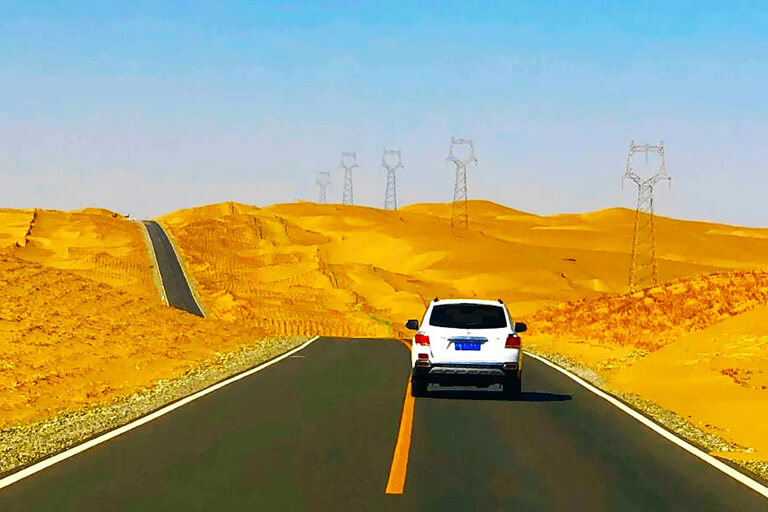
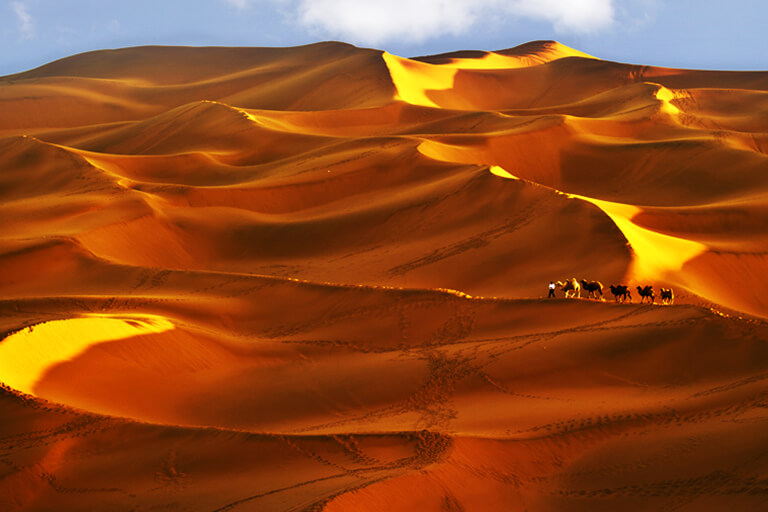
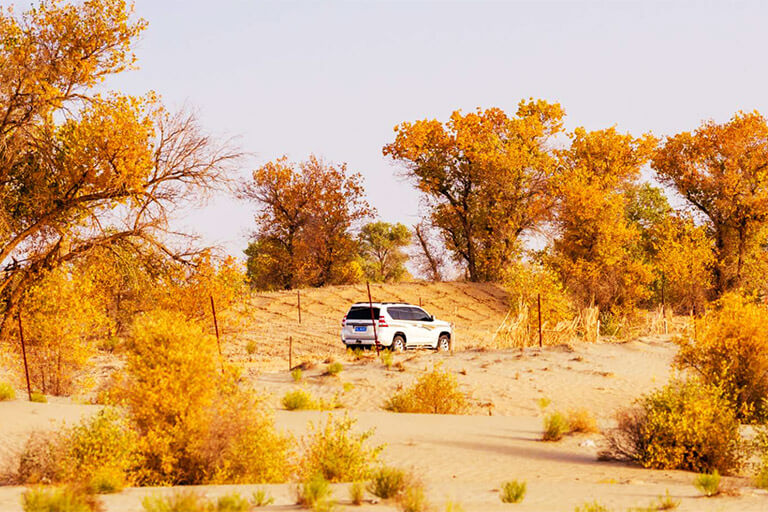
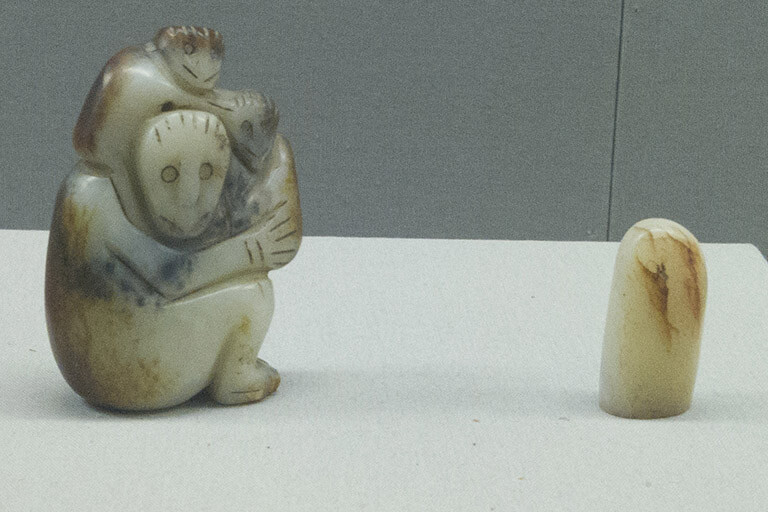
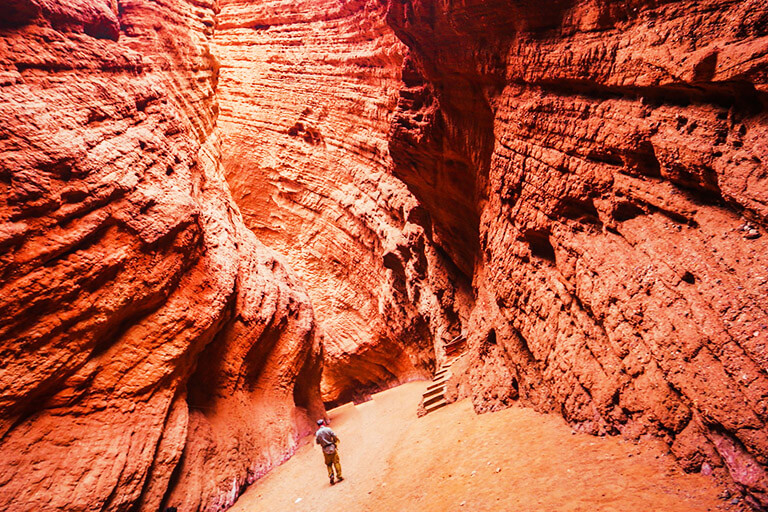
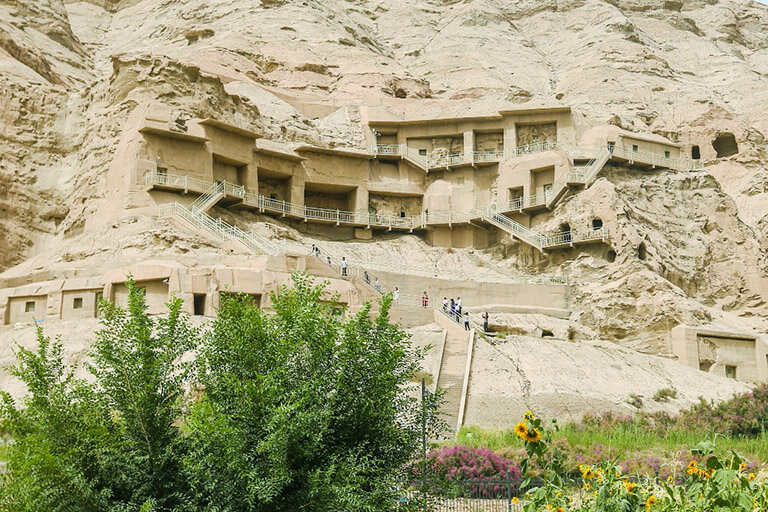
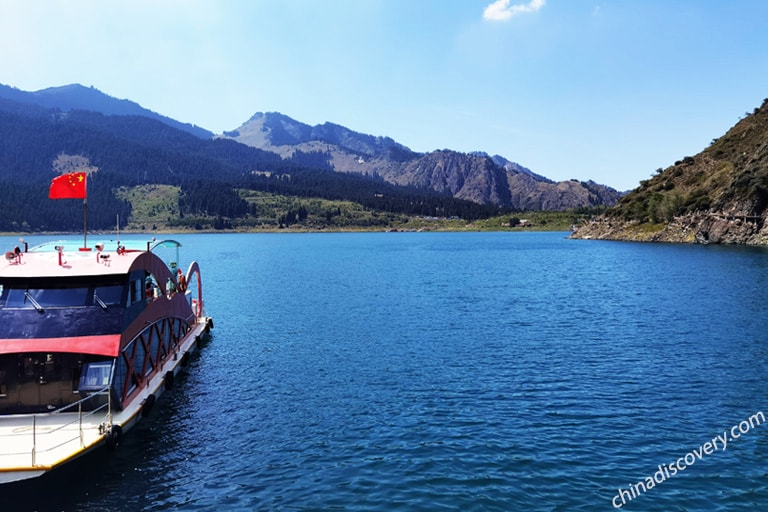
Welcome to Kashgar, the southwestern border city of Xinjiang which used to be the epicenter of the regional trade and cultural exchange of ancient Silk Road for more than two millennia. Upon arriving at the airport/railway station of Kashgar, you will be welcomed by your local tour guide and driver, and escorted to Kashgar downtown to check in to your hotel. The rest time of today is free for you to relax and explore this legendary Silk Road city.
How to get to Kashgar?
- From mainland cities. You can take domestic flights from Beijing (about 6~7 hours), Xian (about 4 hours), Chengdu (about 6~7 hours), Shanghai (about 8 hours), Guangzhou (about 8 hours), Jinan (about 7 hours), Zhengzhou (about 7 hours), etc., or provincial flights from Urumqi (about 2 hours), Korla (about 1.5 hours), Yili (about 1.5 hours). There is no high speed train to Kashgar yet.
- From the borders. You can also get to Kashgar from land border ports, such as Kalasu Port, Irkeshtam Port, Torugart Port, Khunjerab Port. If you need transfer, we can send a tour guide and driver to pick up you from the borders.
No documents found.
After breakfast, you will visit the Abakh Hoja Tomb first which is not a simple tomb but an exquisite architectural complex including chapels, gardens, archways, etc., as the best place in the region to admire Uygur people’s extraordinary aesthetics and skills of Islamic architecture. It also offers a rare opportunity to see and learn about funeral custom celebrated Uygur families because there is a large Islamic family of five generations whose name is Abakh Hoja buried here. The Abakh Hoja was a local Islam master who had strengthened the spread of Islam in Kashgar area, which later earned a great reputation for him and his family.
Next, you will visit the landmark of Kashgar - Id Kah Mosque which is regarded as the holy shrine for the Muslims. Every day, there are thousands of Muslims worshiping here. In the history, Id Kah Mosque used to be a school where Islam culture and history was taught. Many scholars and honored clergies graduated from here. Only several minutes' walking from the mosque is the exotic Kashgar Old Town where you can experience the authentic Uyghur living style. Explore the traditional earth buildings where local people are living in, walk through the famous Handicrafts Street where you can see how the local craftsman making handicrafts. It is a good place to buy some interesting souvenirs for your families and friends. You will also take a break and enjoy a cup of local tea at the Ancient Tea House which is more than 100 years old. The locals also like to spend some leisure time in the tea house with friends and families - drinking, chatting and playing music sometimes.Today’s activities end. Have a good rest in your hotel.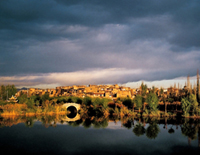
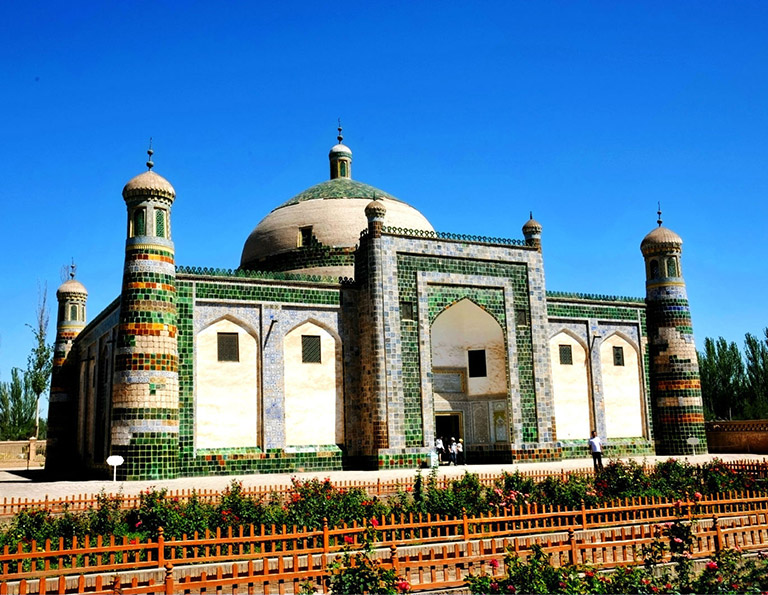
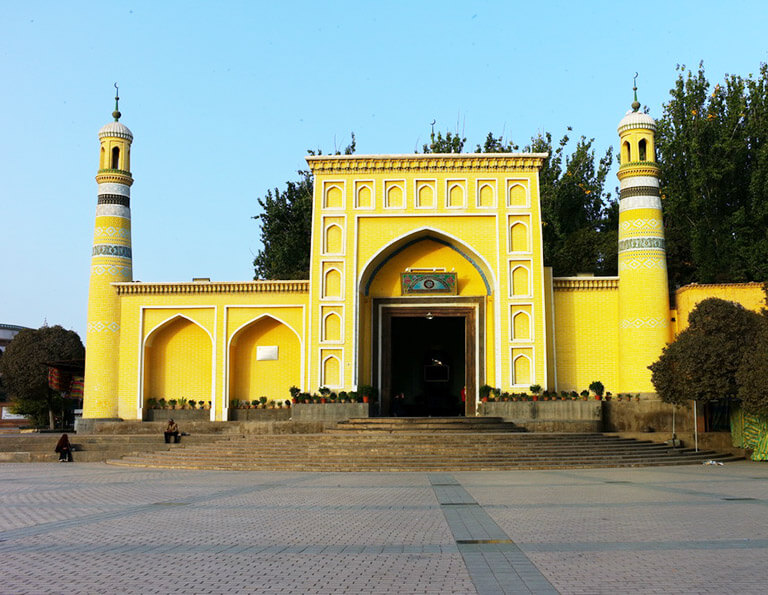
Today, you are going to visit the famous Karakul Lake, which is about 190 km/about 3 hours’ drive from Kashgar downtown. Although it is a long drive, you are surprisingly compensated by the constant landscape of the overwhelming Pamirs Plateau - harsh and lonely snow mountains, inhabited barrens, expansive grassland, pure glaciers, peaceful villages... Make a stop at Baishahu (White Sands Dunes Lake) where a tranquil lake lies under the towering snow mountains of Pamirs Plateau. The sands of Taklamakan Desert fly westward, get stopped by the edge of Pamirs and deposit at the slopes of the mountains, then get washed by the melting ice of the snow mountains, which is the reason why you can see white sand dunes surrounding the White Sand Lake.
You will get to Karakul Lake around noon. After lunch, throw yourself into the breathtaking scenery of the lake and its surroundings. With an altitude of 3600 meters, Karakul Lake is one of the most beautiful alpine lakes in Central Asia. It welcomes visitors with stunning views of pristine lake nestled against Pamirs mountains which provide an azure backdrop as they are covered with snow all year around, including three gigantic mountains - Muztagh Ata (7546 meters), Kongur Tagh (7649 meters) and Kongur Tiube (7530 meters). From other sides, there is a mixture of boundless grasslands, deserts and valleys. A few Kirghiz nomads put their yurts and graze their herds of sheep, horses and camels near the lake. Take your time to wander around the lake to enjoy the landscape and take photos until returning time.
Drive the same way back to Kashgar, and have a good rest in Kashgar city.
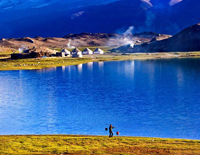
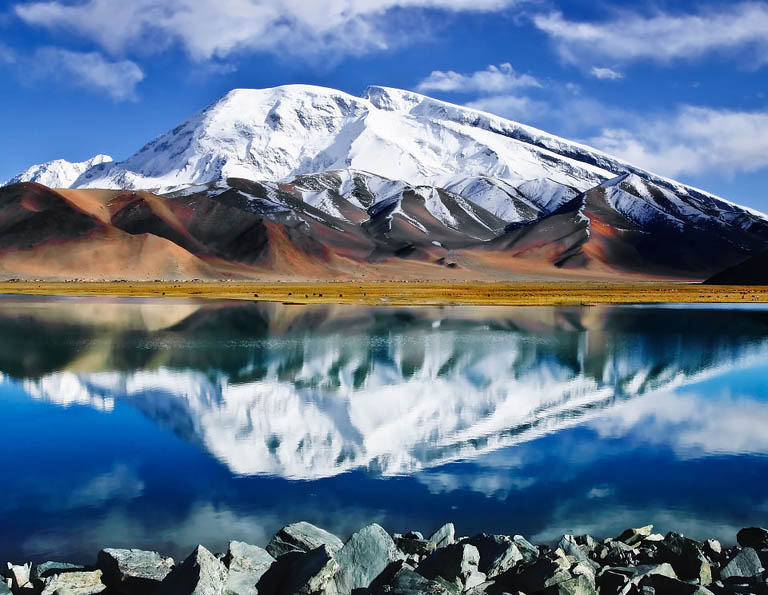
No documents found.
Get up early to drive about 500 km (about 7~8 hours) along the southern Silk Road to Hotan (Hetian), the capital city of Hotan Prefecture at the southwestern edge of Taklimakan Desert. It is a beautiful oasis city strategically located at the junction of the Southern branch of the ancient Silk Road. It was one of the places where not only goods, but also science, religions and philosophies were exchanged in the ancient Silk Road time. Hotan abounds in jades and carpets. Today, Hotan is one of the biggest cities in Xinjiang with co-existence of modernity and old-time tradition and ruins.
After arriving at Hotan in the afternoon, check in to your hotel in Hotan city. The rest time is free for you to relax and explore this old city on your own.
No documents found.
No documents found.
After breakfast, go to visit Hotan Museum. It is an informative museum to learn about the longlasting history and culture of Hotan region as well as Silk Road. The best exhibitions are the unearthed relics of Niya Site, Northern Tombs, Yuetegan Site and other in total of over 30 historical sites, including ceramics, Jewries, stoneware, rock-painting, ancient coins, bamboo slip writings, brocades, flannelette blankets, Buddhist sculptures, etc. The ages of some relics can be traced back to the Neolithic Age and Bronze Age. This museum also helps you know better about the process of Hotan Buddhist kingdom being replaced by Muslim kingdoms in the history. You will then visit a local family workshop to see how Hotan’s specialty – Hotan Carpets are traditionally made. Hotan is praised as “the cradle of Chinese carpet”. There were freestanding textile machines and a complete production process in Hotan in the early Han Dynasty. Its textile technique was later introduced to Iran, and spread to more countries in the world. In Tang Dynasty, Hotan carpets were sold abroad in Tibet, India, Persia and many Arab countries. Why the carpets of Hotan are so popular? The biggest reason is the carpets are made of quality wool produced by Hotan sheep whose furs are neither too thick nor too thin so that the carpets can be soft, elastic, not shed and fading.
After lunch, you will set out for the 6 hours' scenic driving to Ala'er, crossing over the heart land of the Taklamakan Desert. The desert is about 1,000 kilometers long from east to west, 400 kilometers wide from north to south, and covers an area of 330,000 square kilometers, accounting for about 20% of the territory of Xinjiang. Driving on the desert road, you can see different kinds of unpredictable sand dunes, like giant dragons resting on the ground, honeycomb, feather, fish-scale sand dunes… Please note there is no developed attraction along the desert highway. Driving through the desert is the biggest experience. Your guide and driver will arrange stops to stretch your lets and enjoy desert views at safe places.
Accommodate in Ala'er City.
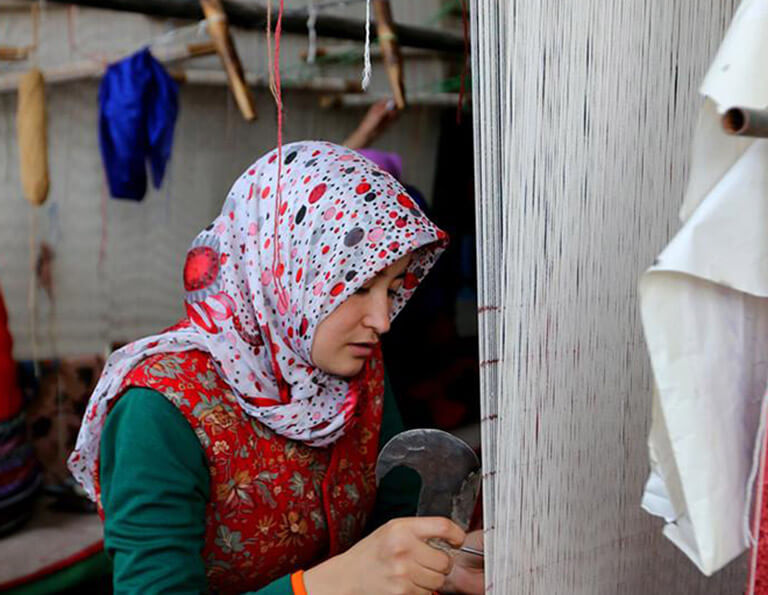
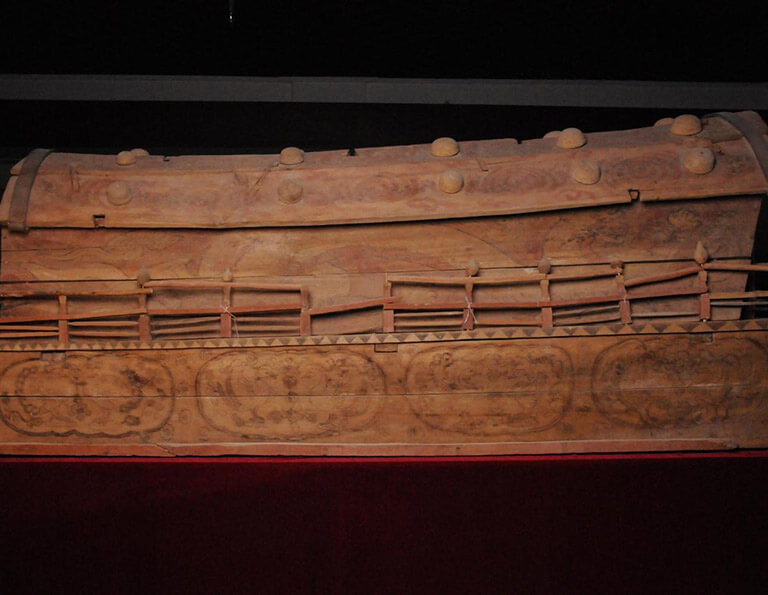
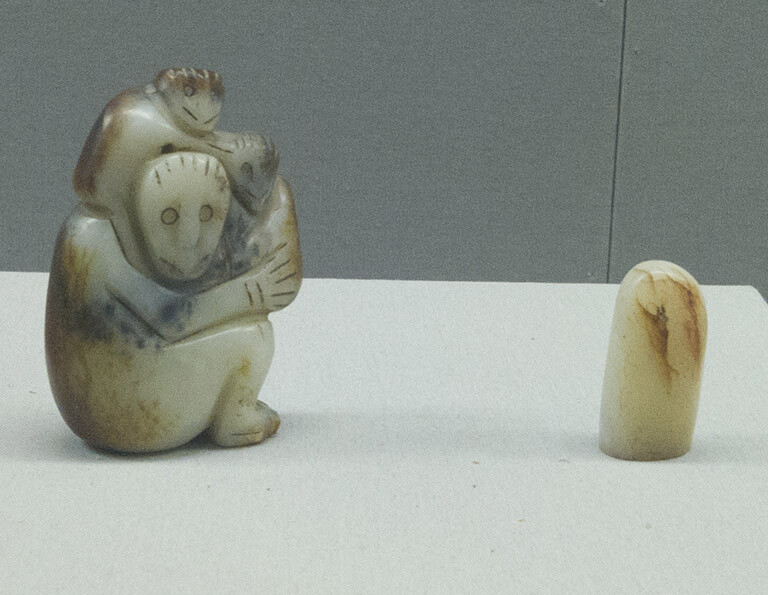
No documents found.
Today after breakfast, drive about 235km (about 4 hours) to Kuqa which was an important historical city on the ancient Silk Road, and the capital of the Buddhist Kingdom of Kucha, the largest of the "Thirty-six Kingdoms of the Western Regions" in over 2000 years ago. Strategically located as the gateway to the middle routes of the Silk Road, Kuqa was the melting pot of different cultures. Before getting to Kuqa city, you will take a stop at Subash Ruins (World Heritage Site). About 1000 years ago, Buddhism ruled Kuqa area. Subash Ruins is one of the rare sites which have survived currently. Today visitors can still discover relic sites of Buddhist temples, pagodas, grottoes, etc.
After lunch, you are going to visit Kuqa Grand Mosque. It is one of the largest and most influential mosques in Xinjiang, next only to the Id Kah Mosque in Kashgar. The archway, constructed by yellow bricks with decoration of beautiful carvings, is the most magnificent architecture in the mosque. Kuqa Grand Mosque also preserves the only surviving religious court of Muslim in Xinjiang. You can soak in the peaceful atmosphere and admire unique Islamic architecture here. Later, you will move to Kuqa Royal Palace (King Palace in Kuqa). It is the home to the last king of Kucha Kingdom who died in 2014. It is said his queen is still living in the palace. There is a small museum in the palace where visitors can learn about the history of the Kings of Kucha and their kingdoms. The most impressive exhibition is the unearthed head sculptures including European, Indian, Mongol, Russian, Chinese, etc. You can imagine how “international and popular” Kuqa was in the ancient time of Silk Road. The road where the palace is located on is named Linji Road. You can still find two City Walls of Qing Dynasty which was built to separate Han Chinese and Huihu Muslims – one is at the north 100m from the palace and another at the left corner of Linji Road.
The rest time of today is to stroll leisurely in the Old City of Kuqa. It is a great place to experience local culture. The most featured area is Resitan Road which is the main avenue of the old city. Colorful fancy Uygur courtyards and shabby earth houses squeeze at the both sides of the road. Local markets sell articles of daily use as well as many local snacks and souvenirs.
Accommodate in Kuqa city.
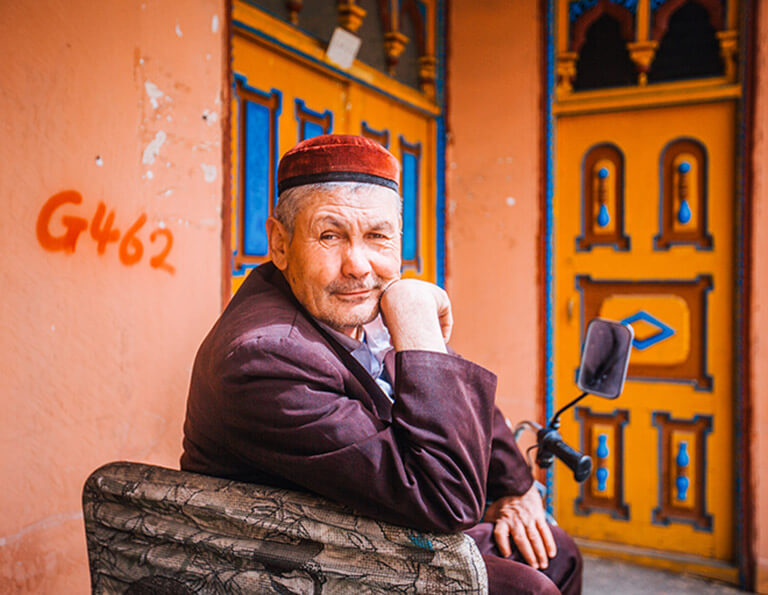
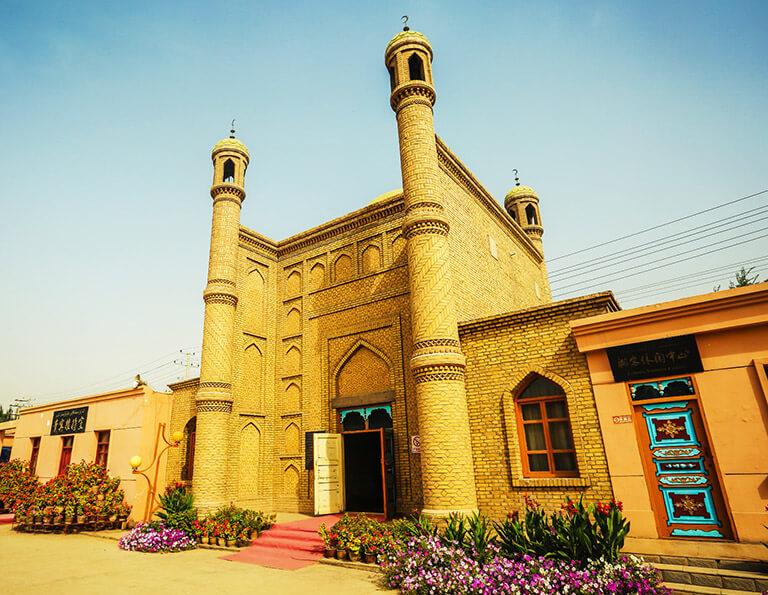
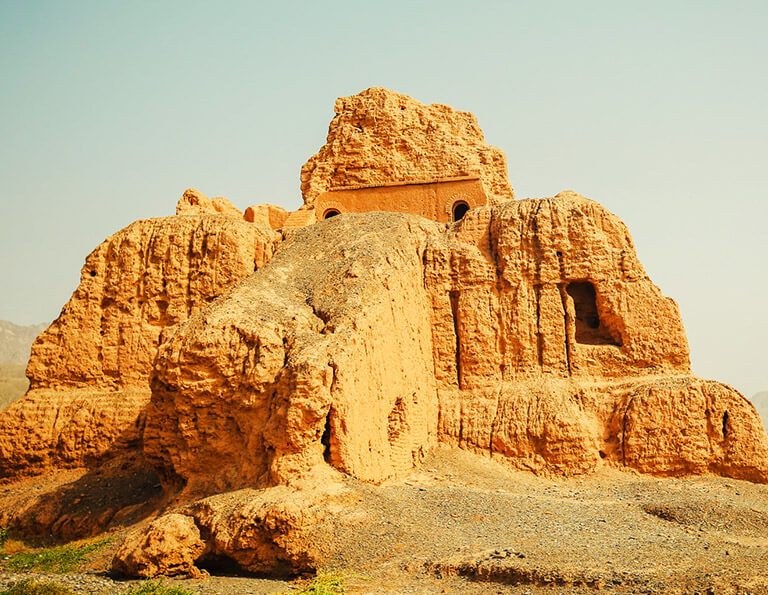
No documents found.
Today you are going to explore Kuqa Grand Canyon, also known as Tianshan Mysterious Canyon. It is the no. 1 highlight of Kuqa that everyone shouldn’t miss. This national geopark is located in 72km north from Kuqa city. Take an excursion visit to Kizil Gaha Beacon. With a history over 1500 years, it doesn’t look grandiose, but may be the world’s oldest surviving beacon. Keeping driving to Kuqa Grand Canyon, you won’t get bored as you will make your way through many amazing landscapes of different landforms. Feel free to ask for stops at the safe places to take photos along the way.
Kuqa Grand Canyon is about 5km long, allowing a relaxing hike around 2 hours. It is a unique and scenic experience to walk on the river bed surrounded by towering woven shades of red sandstone. You need to activate your imagination to recognize all the mysterious figures as some cliffs are like elephant, dog, gate, etc. There are also enough shadow places to take rest if you visit the canyon in a sunny hot day. All these experiences make you feel yourself entering into a mysterious wonderland.
After the canyon hike, drive about 82 km (1.5 hours) to next site - Kizil Grottoes which is the most important Buddhist grottoes in Xinjiang. It is hard to believe that there is such a magnificent Buddhist site made by hundreds of Buddhist grottoes existing in Kuqa where Muslim has dominated everywhere. Actually, the fact is that over 1000 years ago, Kuqa and many areas in Xinjiang were ruled by Buddhist kingdoms. Being not as famous as Mogao Grottoes in Dunhuang, but Kizil Grottoes is even older, and has brilliant value for historical and cultural researches. It is praised as “the treasure house of art” because of its beautiful murals and grottoes architecture. Unfortunately, many of the murals have been destroyed by the anti-Buddhism movements in the history, and some murals were stolen by western explorers in the early 20th century. But with the explanation of the guides, one can still marvel at the greatness of the grottoes. Currently, only some featured grottoes are open for tourists. Many other grottoes are closed for protection. Bag, water, camera and lighters are not allowed to be brought into the grottoes.
Drive back to Kuqa for accommodation.
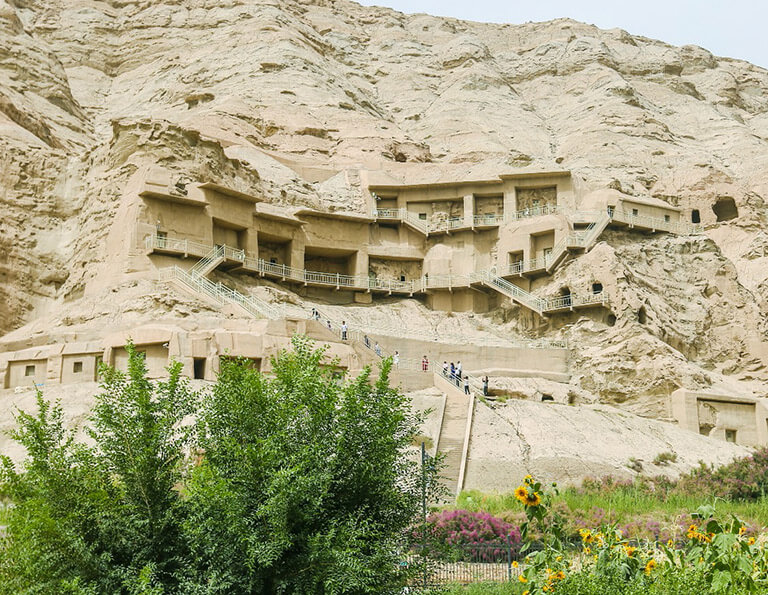
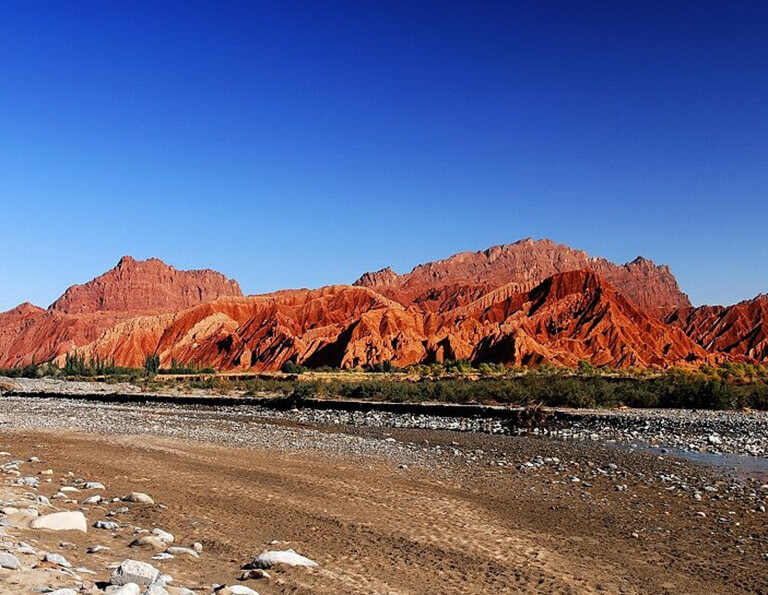
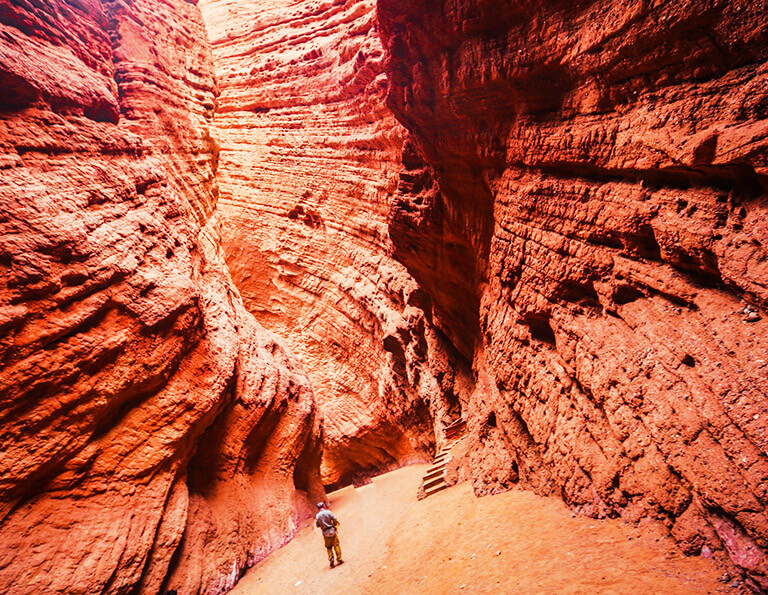
No documents found.
After breakfast, take an early flight to Urumqi (about 1 hour), then driver about 75km (1.5 hours) to the scenic area of Heavenly Lake. To protect the authenticity of the natural environment, our private car can only bring you to the entrance of the park. You will then shift on to a park bus to the parking lot around the lake area. Walking about 15 minutes, you will get to the lakeside of the Heavenly Lake. The rest time is free for you to stroll along the periphery of the lake, breathe the remarkably fresh air, and soak in the wonderful scenery. With an altitude of 1980m, Heavenly Lake and its alluring surrounding truly offer you a visual feast like heaven, featuring in serene alpine lake, rugged slopes with snow-capped mountains, pure glaciers, wild forest, vast grassland as well as unique ethnic culture.
Generally speaking, there are three ways to explore Heavenly Lake. You can go to walk around the lake, take a boat cruise, or ride cable car to the mountain top. If time allows, you can even enjoy all the experiences. The Boat cruise and cable car need extra fees. Tell your preference to your guide who will then arrange accordingly for you.
- Walking around the lake. Plank roads were constructed to encircle the lake. But since the lake is very large, it takes about 5 hours to finish the circle. You can decide the hiking length on your own according to your physical condition and time. Fee: free.
- Boat Cruise on the lake. It is very popular among travelers to take a boat cruising to the deeper area of the lake and back, which is leisure and scenic. There are modern ships, Chinese-style ships and high-speed boats available with different prices. Fee: about CNY 100.
- Panoramic view from Maya Mountain. If you want more landscape, you can take a cable car up to Maya Mountain where you can enjoy the panoramic view of Heavenly Lake and closer view of Tianshan Mountain Range. Fee: about CNY 220.
After the landscape trip, take park bus to exit the park, and drive to Urumqi. Accommodate in Urumqi city.
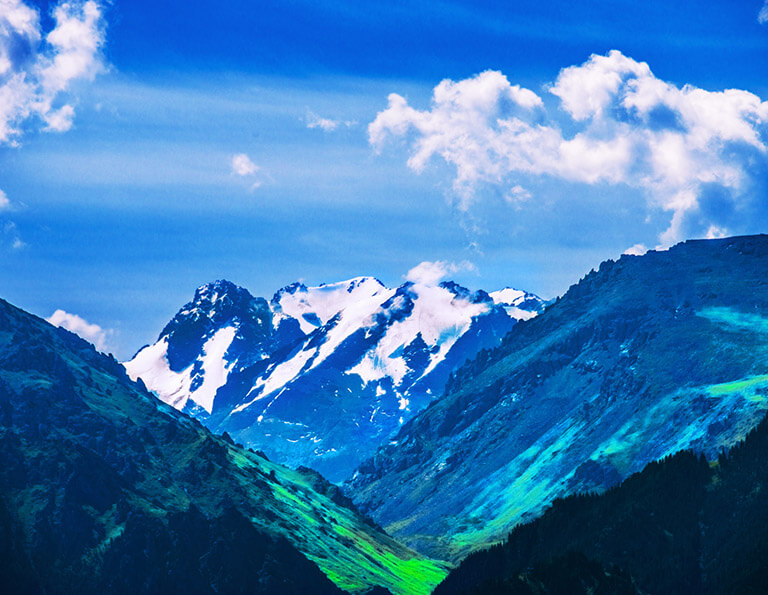
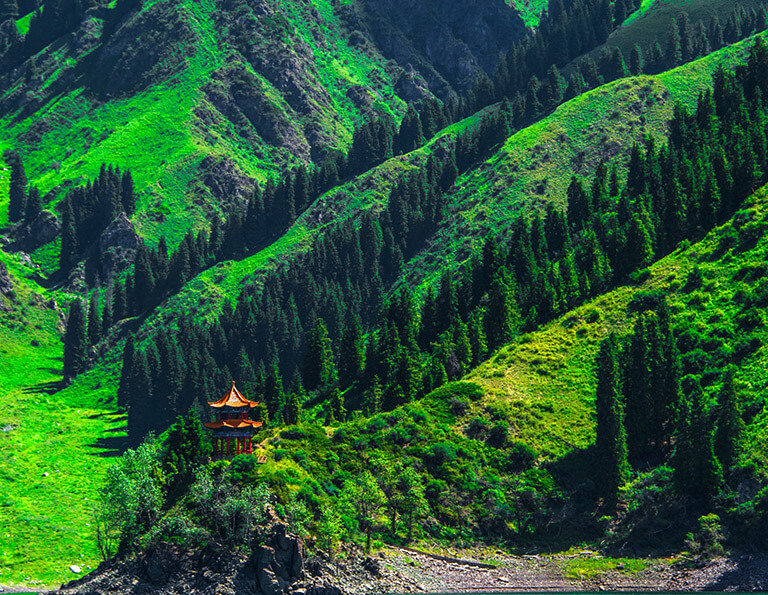
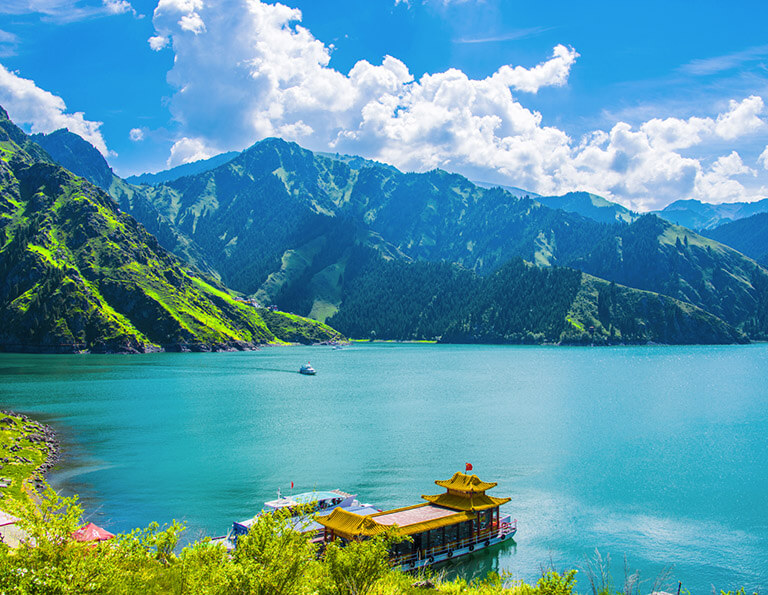
This morning after breakfast, you will be taken to have an educational visit to the Xinjiang Regional Museum. It is the most important ancient Silk Road themed museum in China which exhibits about 50,000 historical relics including more than 400 National First-class relics (60% of the total in Xinjiang). Among all the exhibitions, the most unique exhibition is the Mummy Hall. It collects 10 more than 4000 years old mummies which were mostly found in Loulan Ancient Kingdom Ruin and preserved almost intact. Loulan Princess, the most famous mummy in the museum, will definitely strike you with its typical European face. All these important exhibitions help you learn deep into the history and culture of Xinjiang as well as ancient Silk Road.
Continuing your Urumqi city tour, you will move to Red Hill Park which is regarded as the symbol of Urumqi. It is the most popular place for the locals to relax and gather. For travelers, it is a great place to experience folk culture and living style. Finding a higher location in the park, you are rewarded with a pleasant panoramic view of Urumqi city. Leaving the Red Hill Park, you will get to Erdaoqiao Grand Bazaar to enjoy a leisure stroll. If you want to purchase some souvenirs, here is the best place.
The rest of today is free for you to relax until you are escorted to catch your flight/train to the next destination. Tour ends.
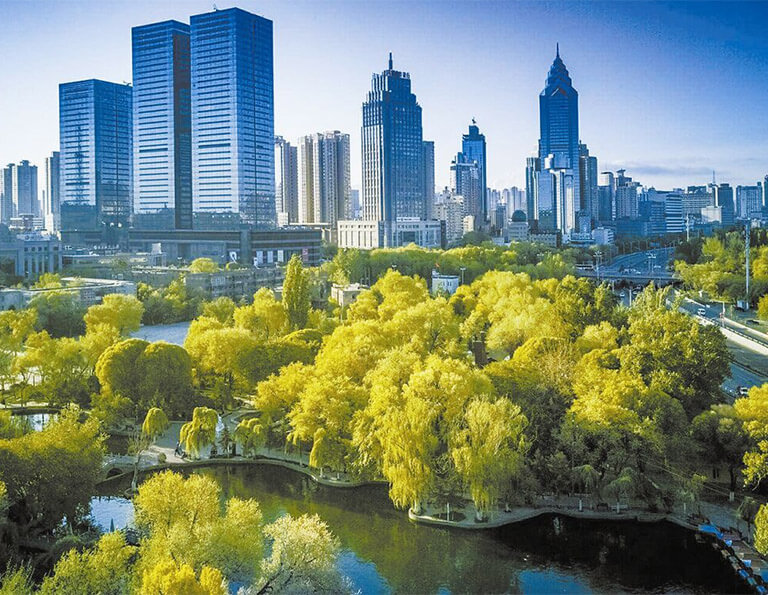
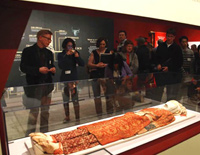
No documents found.
Read what other travelers think about this China trip. We only accept reviews from actual, confirmed travelers who purchased the tour / activity from us, so you can be sure the reviews are unbiased and authentic.
Hi Wonder,
We are safely back in Guangzhou. Wonderful experience. All the planned events were highlights and the little extra side trips were a plus. Thank you for all your careful planning.
Hi Leo,
This is a very short customised arrangement during which the China border is not fully opened yet.
China Discovery charges a premium though, but it delivered without fail.
The VOA is very new to even the custom officers who were on duty when I cleared the immigration check at Shenzhen as well as the HK side. I must say that the agent did his professional service by always on the call to allow on-site changes of my arrival time because immigration clearance was so unpredictable. I can be assured that someone is just outside the arrival hall to pick me up and, I could tell the immigration officer that my local contact person is just waiting outside to pick me once I am cleared with this new procedure.
It is always safer to have a local contact to guide you and make arrangements for your local transfer when language ( Cantonese instead of Mandarin) is a problem in China .
Thx for the service . Thx to Matt too.
Rgds
Rita,
thank you for your arrangement. The tour and logistics were really good. We are very happy and look forward to the next trip in China with your company.
Here are recent candid photos of this China trip. If you want to share your own tour photos, simply email your photos to info@chinadiscovery.com with your Booking ID Number. Thanks in advance for sharing!
We are here to be at your service! Please complete the following free enquiry form letting us know all of your requirements, and one of our experienced staff will be in contact with suggestions within 0.5-23.5 hours. Your Privacy is protected!

Urumqi / Turpan / Kumtag Desert / Urumqi